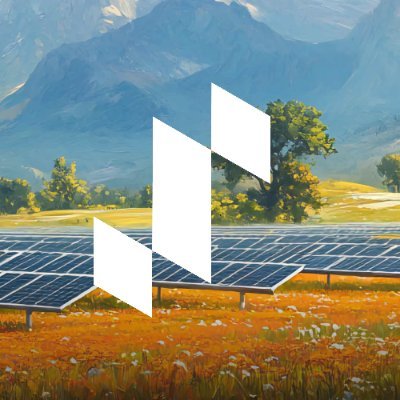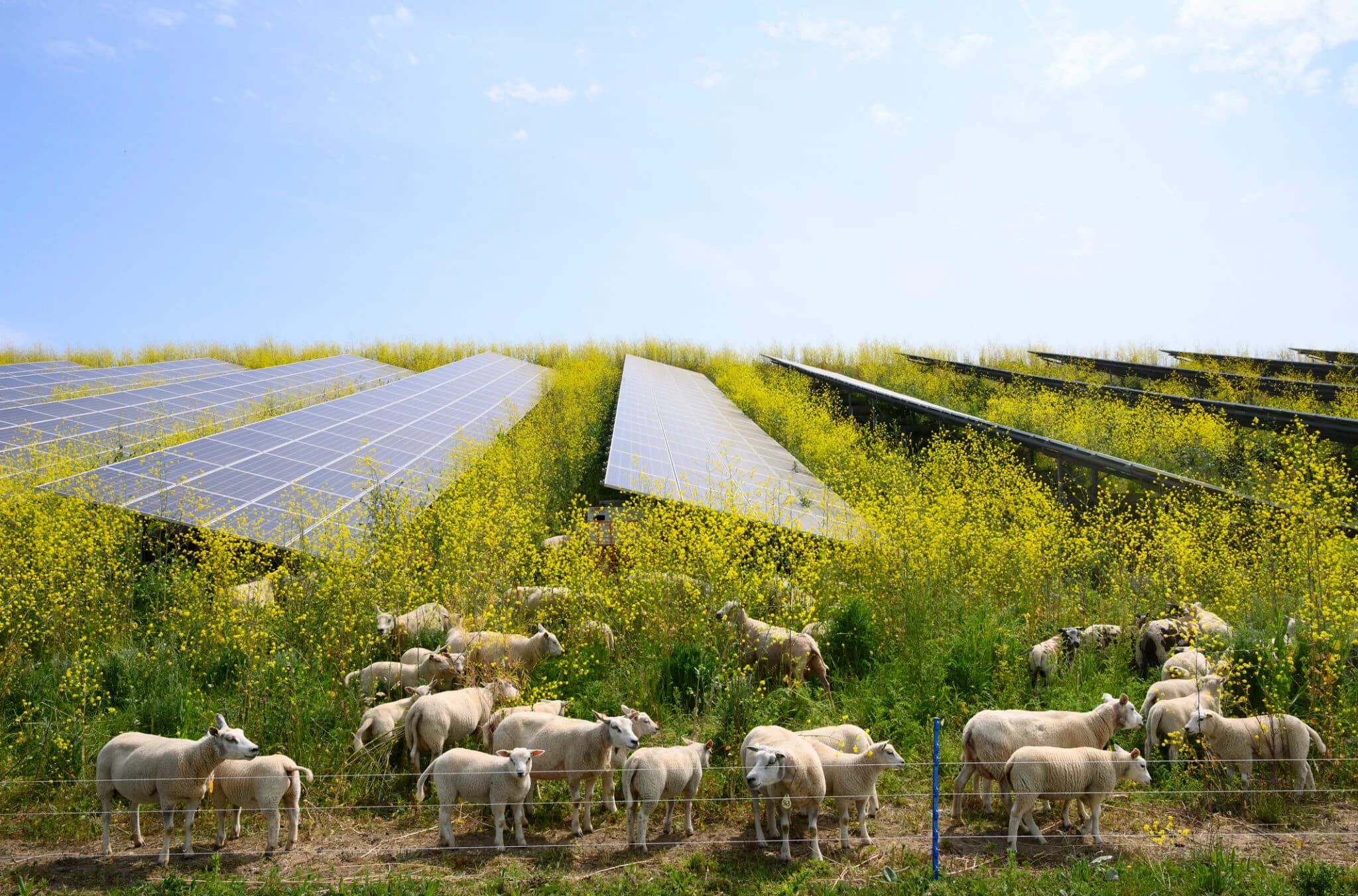The Best Animals For Solar Grazing



As the push for renewable energy intensifies, innovative farming practices like Solar Grazing are gaining traction. This approach not only optimizes land use but also fosters healthier ecosystems by incorporating livestock to manage vegetation beneath and around solar panels. However, choosing the right animals for solar grazing is essential for maximizing productivity and sustainability.
When we think of Solar Grazing, the first image that often comes to mind is a cute sheep relaxing in the shade of solar panels on a sunny day. It's well-known that sheep are the most commonly used animals for this purpose, and research indicates they are also the best-suited species for it. However, it is important to note that the benefits of Solar Grazing are not limited to sheep alone. Other animals, such as goats, cattle, and poultry, can also be used for solar grazing, depending on the specific Solar Configuration you have decided to use and the needs of your farm.
1. Sheep
Sheep are domesticated mammals, known for their wool, meat, and milk. They are typically social animals that live in flocks, relying on each other for protection against predators.
There are many breeds of sheep, each suited for specific purposes, such as meat, wool, or milk. As herbivores, they graze on grass and vegetation, which helps manage land and support biodiversity.
Despite common misconceptions, sheep are intelligent and can recognize faces and learn from their experiences. They communicate through vocalizations and body language, expressing emotions and alerting their flock to danger. Generally, sheep live around 10 to 12 years but can live longer with good care. Overall, they play a vital role in agriculture and the environment.
Benefits for Solar Grazing:
Weed Control: Sheep effectively graze on weeds, helping to manage vegetation around solar panels and keeping the area tidy.
Grass Growth Promotion: Their grazing habits encourage healthy grass regrowth, which can enhance soil health and improve the overall ecosystem under the solar array.
Low Maintenance: Compared to some other livestock, sheep generally require less maintenance and can thrive in various environments.
Cons:
Predation Risk: Sheep are vulnerable to predators, such as coyotes and dogs, requiring secure fencing and possibly guard animals, which can increase operational costs.
Health Monitoring: They can be susceptible to diseases and parasites, necessitating regular health checks and veterinary care, adding to labor and costs.
Solar Panel Interaction: If not properly managed, sheep may damage solar panels by grazing too closely or by rubbing against them.
2. Goats
Goats are domesticated animals known for their versatility. They are raised for milk, meat, fiber, and skin. Social and curious, goats thrive in herds and are known for their adventurous nature, often exploring their surroundings.
As herbivores, they graze on a variety of plants, making them effective for land management. There are many breeds, each suited for specific purposes, such as dairy, meat, or fiber. Goats are intelligent and trainable, often recognizing human faces.
With a lifespan of 10 to 15 years, goats adapt well to different environments. Their playful personalities and contributions to agriculture make them popular among farmers and hobbyists alike.
Benefits for Solar Grazing:
Brush Clearance: Goats are excellent at clearing brush and invasive plants, making them ideal for managing underutilized areas in solar farms.
Versatile Browsers: They thrive in various terrains and can handle uneven ground, which is often found in solar installations.
Nutrient Cycling: Their grazing helps cycle nutrients back into the soil through manure, enhancing soil fertility.
Cons:
Escaping Tendencies: Goats are notorious for escaping enclosures, requiring sturdy fencing, which can increase setup costs and maintenance.
Selective Grazers: They can be picky about what they eat, leading to uneven grazing patterns that might leave some areas overgrown while others are bare.
Compatibility with Solar Panels: Goats may also chew on wiring or equipment, which could lead to damage and increased repair costs.
3. Cattle
Cattle are domesticated animals primarily raised for meat, milk, leather, and labor. They are social animals that often live in herds, exhibiting strong social structures and behaviors.
Cattle are herbivores, primarily grazing on grass and other vegetation. Different breeds have been developed for specific purposes, such as beef (like Angus) or dairy (like Holstein).
These animals are known for their intelligence and adaptability, capable of forming bonds with humans and other cattle. Cattle typically live around 15 to 20 years, although some can live longer with proper care. Their significance in agriculture is immense, providing essential resources and contributing to the economy and ecosystems.
Benefits for Solar Grazing:
Nutrient Enrichment: Cattle contribute to soil health through manure, which can improve microbial activity and nutrient levels in the soil.
Effective Grazers: They can manage larger areas and are effective at maintaining grass heights, promoting healthier pastures under solar panels.
Cons:
Space Requirements: Cattle need significantly more space than smaller livestock, which can limit stocking density on solar farms.
Management Complexity: They require more resources, including ample water and shelter, particularly during extreme weather conditions, increasing operational demands.
Potential Damage to Solar Infrastructure: Cattle can inadvertently damage solar panels or fencing, leading to costly repairs if not managed properly.
4. Poultry (e.g., Chickens)
Poultry refers to domesticated birds raised for their eggs, meat, and feathers, with chickens being the most common type. Other types include turkeys, ducks, and geese.
Poultry are social animals that often live in flocks, exhibiting behaviors like pecking orders and communal nesting. They have varied diets, typically consisting of grains, seeds, and insects.
Different breeds of poultry are bred for specific purposes, such as egg production (like the Leghorn) or meat (like the Broiler). Poultry are generally easy to raise and can thrive in a range of environments.
Their contributions to agriculture are significant, providing a major source of protein and income for many farmers worldwide. With a lifespan of around 5 to 10 years, poultry plays an essential role in both local and global food systems.
Benefits for Solar Grazing:
Pest Control: Chickens forage for insects, helping to manage pests around solar installations, which can reduce the need for chemical interventions.
Fertilizer Production: Their droppings provide natural fertilizer, enriching the soil and promoting healthier vegetation.
Cons:
Limited Grazing Impact: While they help with pest control, chickens do not graze on larger vegetation, limiting their role in vegetation management.
Predation Vulnerability: Chickens are at high risk from predators, necessitating secure coops and fencing, which adds to the setup costs.
Labor Intensive: Poultry require daily care, including feeding and egg collection, which can be labor-intensive for farmers.
Still don't know what to choose?
For The Solarpunks, it’s essential to share the benefits and drawbacks of different animals used in solar grazing, helping you make informed decisions for your farm.
Our team of experts can help you decide what works best for you. Start your Solarpunk journey!